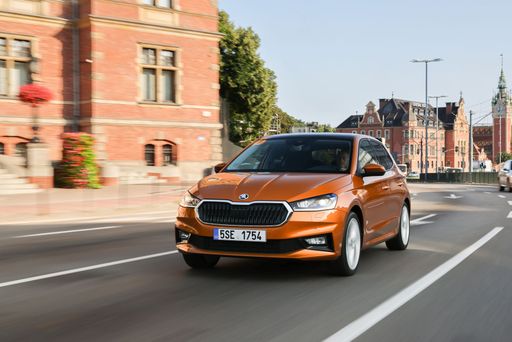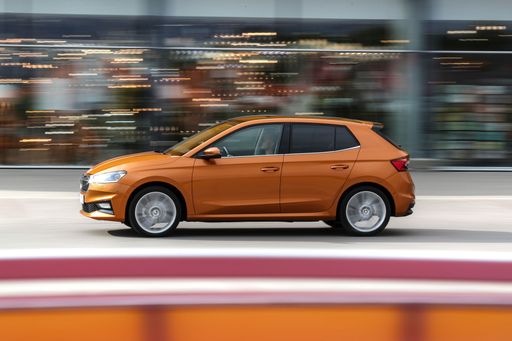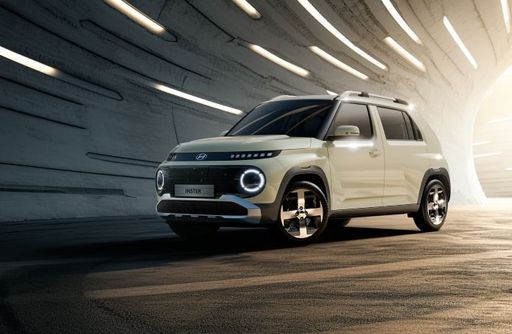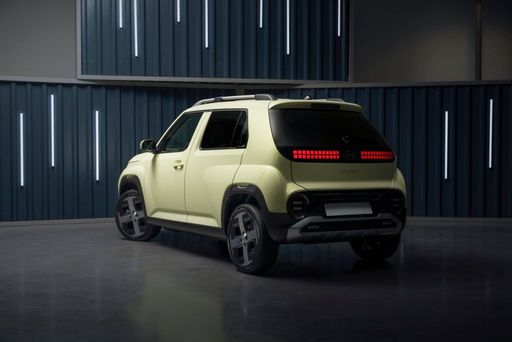Skoda Fabia vs Hyundai Inster – Differences & prices compared
Both models have their strengths – but which one suits you more?
Compare performance, efficiency, price and space directly: Skoda Fabia or Hyundai Inster?
Costs and Efficiency:
Price and efficiency are often the first things buyers look at. Here it becomes clear which model has the long-term edge – whether at the pump, the plug, or in purchase price.
Skoda Fabia has a distinct advantage in terms of price – it starts at 16900 £, while the Hyundai Inster costs 20500 £. That’s a price difference of around 3608 £.
Engine and Performance:
Power, torque and acceleration are the classic benchmarks for car enthusiasts – and here, some clear differences start to show.
When it comes to engine power, the Skoda Fabia has a distinct edge – offering 150 HP compared to 115 HP. That’s roughly 35 HP more horsepower.
In acceleration from 0 to 100 km/h, the Skoda Fabia is evident quicker – completing the sprint in 8 s, while the Hyundai Inster takes 10.60 s. That’s about 2.60 s faster.
In terms of top speed, the Skoda Fabia performs distinct better – reaching 222 km/h, while the Hyundai Inster tops out at 150 km/h. The difference is around 72 km/h.
There’s also a difference in torque: Skoda Fabia pulls clearly stronger with 250 Nm compared to 147 Nm. That’s about 103 Nm difference.
Space and Everyday Use:
Whether family car or daily driver – which one offers more room, flexibility and comfort?
Seats: Skoda Fabia offers somewhat more seating capacity – 5 vs 4.
In curb weight, Skoda Fabia is distinct lighter – 1143 kg compared to 1380 kg. The difference is around 237 kg.
In terms of boot space, the Skoda Fabia offers evident more room – 380 L compared to 280 L. That’s a difference of about 100 L.
In maximum load capacity, the Skoda Fabia performs somewhat better – up to 1190 L, which is about 131 L more than the Hyundai Inster.
When it comes to payload, Skoda Fabia slightly takes the win – 437 kg compared to 357 kg. That’s a difference of about 80 kg.
Who comes out on top?
Overall, the Skoda Fabia shows itself to be dominates this comparison and secures the title of DriveDuel Champion.
It convinces with the more balanced overall package and proves to be the more versatile choice for everyday use.

Skoda Fabia
Skoda Fabia
The Skoda Fabia presents itself as a practical and stylish hatchback, perfect for urban driving and beyond. Its interior is designed with comfort and functionality in mind, offering ample space and intuitive controls. With a focus on efficiency, the Fabia provides a smooth driving experience, complemented by its crisp and modern exterior design.
details @ Skoda Presse Deutschland
@ Skoda Presse Deutschland
 @ Skoda Presse Deutschland
@ Skoda Presse Deutschland
 @ Skoda Presse Deutschland
@ Skoda Presse Deutschland
 @ Skoda Presse Deutschland
@ Skoda Presse Deutschland
 @ Skoda Presse Deutschland
@ Skoda Presse Deutschland
Hyundai Inster
The Inster has quickly captured the attention of automotive enthusiasts with its striking design and dynamic performance. This model seamlessly blends advanced technology with comfort, making it an ideal choice for both daily commutes and adventurous road trips. With its spacious interior and innovative features, the Inster promises an exhilarating driving experience that doesn’t compromise on practicality.
details @ hyundai.news
@ hyundai.news
 @ hyundai.news
@ hyundai.news
 @ hyundai.news
@ hyundai.news

|

|
|
|
|
Costs and Consumption |
|
|---|---|
|
Price
16900 - 26000 £
|
Price
20500 - 25800 £
|
|
Consumption L/100km
4.9 - 5.3 L
|
Consumption L/100km
-
|
|
Consumption kWh/100km
-
|
Consumption kWh/100km
14.3 - 15.1 kWh
|
|
Electric Range
-
|
Electric Range
327 - 370 km
|
|
Battery Capacity
-
|
Battery Capacity
42 - 49 kWh
|
|
co2
112 - 119 g/km
|
co2
0 g/km
|
|
Fuel tank capacity
40 L
|
Fuel tank capacity
-
|
Dimensions and Body |
|
|---|---|
|
Body Type
Hatchback
|
Body Type
SUV
|
|
Seats
5
|
Seats
4
|
|
Doors
5
|
Doors
5
|
|
Curb weight
1143 - 1261 kg
|
Curb weight
1380 - 1433 kg
|
|
Trunk capacity
380 L
|
Trunk capacity
238 - 280 L
|
|
Length
4108 - 4125 mm
|
Length
3825 - 3845 mm
|
|
Width
1780 mm
|
Width
1610 mm
|
|
Height
1459 - 1461 mm
|
Height
1575 - 1610 mm
|
|
Max trunk capacity
1190 L
|
Max trunk capacity
1059 L
|
|
Payload
414 - 437 kg
|
Payload
317 - 357 kg
|
Engine and Performance |
|
|---|---|
|
Engine Type
Petrol
|
Engine Type
Electric
|
|
Transmission
Manuel, Automatic
|
Transmission
Automatic
|
|
Transmission Detail
Manual Gearbox, Dual-Clutch Automatic
|
Transmission Detail
Reduction Gearbox
|
|
Drive Type
Front-Wheel Drive
|
Drive Type
Front-Wheel Drive
|
|
Power HP
80 - 150 HP
|
Power HP
97 - 115 HP
|
|
Acceleration 0-100km/h
8 - 15.7 s
|
Acceleration 0-100km/h
10.6 - 11.7 s
|
|
Max Speed
175 - 222 km/h
|
Max Speed
140 - 150 km/h
|
|
Torque
93 - 250 Nm
|
Torque
147 Nm
|
|
Number of Cylinders
3 - 4
|
Number of Cylinders
-
|
|
Power kW
59 - 110 kW
|
Power kW
71 - 85 kW
|
|
Engine capacity
999 - 1498 cm3
|
Engine capacity
-
|
General |
|
|---|---|
|
Model Year
2025
|
Model Year
2025
|
|
CO2 Efficiency Class
D, C
|
CO2 Efficiency Class
A
|
|
Brand
Skoda
|
Brand
Hyundai
|
What drivetrain options does the Skoda Fabia have?
Available configurations include Front-Wheel Drive.
The prices and data displayed are estimates based on German list prices and may vary by country. This information is not legally binding.
